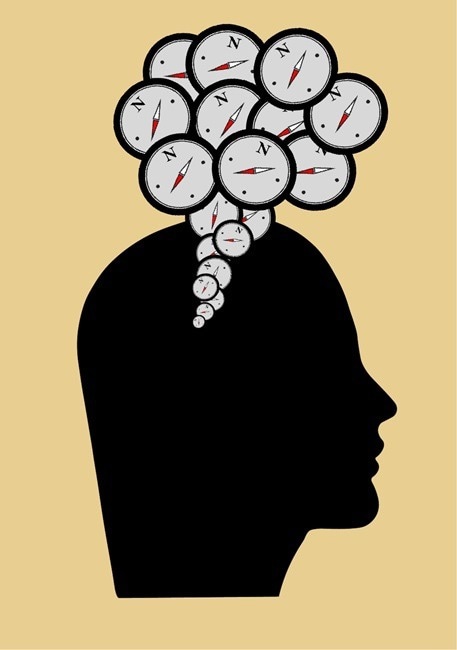Reviewed by Danielle Ellis, B.Sc.Jan 8 2024
Researchers at the University of Tübingen have uncovered new roles for head-direction cells, which may have an impact on the development of episodic memory.
 Memory and the internal brain compass. Image Credit: University of Tübingen
Memory and the internal brain compass. Image Credit: University of Tübingen
The brain’s head-direction cells have been referred to as its “internal compass” since the brain’s discovery in the 1990s. These cells are believed to be crucial for navigation and spatial orientation because the cells become active when an animal or human points their head in a particular direction.
However, a group of neuroscientists from the University of Tübingen has found that mice’s head-direction cells are capable of more. The scientists might be involved in the transmission of sensory and affective data that is utilized to create “episodic memory,” or recollections of events.

Image Credit: SewCreamStudio/Shutterstock.com
The study was published in the journal Nature Neuroscience by the research team, which was headed by Professor Andrea Burgalossi from the Institute of Neurobiology and the Werner Reichardt Center for Integrative Neuroscience (CIN).
The combination of the senses helps the body create memories of the outside world that humans experience. The hippocampus is a part of the brain that combines various sensory impressions, such as the warmth of a hug, the echo of laughter, and the visual stimulus of a beautiful landscape. Processing like this is essential to turning transient sensory experiences into enduring memories.
The hippocampus is a kind of neural curator that integrates the information. During an experience, a memory trace is created in the hippocampus for that episode in our lives.”
Andrea Burgalossi, Professor, Institute of Neurobiology, Werner Reichardt Center for Integrative Neuroscience, University of Tübingen
Previous Assumptions Called into Question
The research team concentrated on the anterior thalamus, one of the hippocampus's primary input structures in the brain, to better understand where sensory information enters the hippocampal region.
We have known for dec-ades that this area is crucial for episodic memory. Patients with damage to this region of the brain suffer from memory loss.”
Dr Patricia Preston-Ferrer, Lead Author, Institute of Neurobiology, University of Tübingen
When scientists first recorded the activity of nerve cells in the anterior thalamus of rodents in the 1990s, the scientists discovered the head-direction cells located there.
Preston-Ferrer says, “Previously, it was assumed that these only encoded the animal’s heading direction in its environment. But now our latest experiments show that this idea provides an incomplete picture.”
When the Tübingen research team recorded the electrical activity in the mouse brain, the team found that the head-direction cells in the thalamus became active when the team exposed the mouse to sensory stimuli.
In the case of a sound being played, as well as in the case of a tactile whisker on the mouse's snout being touched, only the head-direction cells were activated specifically and reliably and with a remarkably short delay. We were surprised, as it had been assumed for decades that these neurons were unresponsive to sensory stimuli.”
Giuseppe Balsamo, Researcher and Co-Author, Institute of Neurobiology, University of Tübingen
Possible Connection Between Inner Compass and Episodic Memory
The experiments showed that in the anterior thalamus, only the head-direction cells responded to sensory stimuli.
Dr Eduardo Blanco-Hernandez says, “This tells us that head-direction cells must have a special function. Their function must go beyond acting as an internal compass. The head-direction cells also responded with increased activity to aroused states including social contacts such as encountering another mouse. It is known that close attention and emotions have a great influence on the formation of memories and their quality. In such situations, we remember much more vividly than in an uninvolved, passive state.”
Blanco-Hernandez is a CIN researcher and co-author of the study.
Overall, the new findings suggest that head-direction cells within the thalamus could serve as a pivotal gateway for sensory, attentional, and arousal-related information, potentially influencing the entry of such data into the episodic memory system.
Burgalossi says, “To understand how a memory trace is formed, we need to know the pathways and nerve cells involved that transmit basic information to the hippocampus. Based on our work, we believe the inner compass represents a key node in this process.”
More research is needed to determine whether this node could be influenced, for example, therapeutically to improve memory formation and retrieval.
Source:
Journal reference:
Blanco-Hernández, E., et al. (2024) Sensory and behavioral modulation of thalamic head-direction cells. Nature Neuroscience. doi.org/10.1038/s41593-023-01506-1